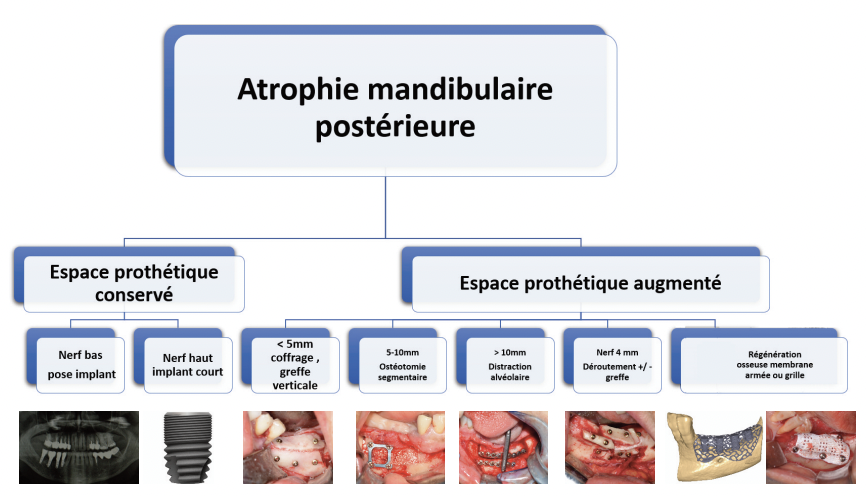
It’s all about the space of the prosthetics and nerves!
The management of posterior mandibular atrophy is subject to several limitations. Indeed, due to its anatomical location, the posterior jaw region is less accessible than the anterior segment. The greater the absorption, the more the muscle attachments retract, making any vertical and horizontal reconstruction difficult. Thus, management of the inferior alveolar nerve and soft tissues are the keys to success. The presence of the inferior alveolar nerve and the mental nerve must be considered before selecting which type of bone reconstruction would be most appropriate for our clinical case. Faced with a case of posterior mandibular atrophy, the “graft surgeon” will naturally ask several technical questions: where are the bone fitting screws placed, the screws in the case of bone regeneration, and what is the height of the bone apex? Are adjacent teeth preserved? Should the soft tissue be modified before or after vaccination?
During initial training, it is very rare to find guidance on the most appropriate technique in a given situation.
This absence of a clear decision tree makes communication with the patient and the reporter (implantologist or dental surgeon) sometimes difficult. Indeed, it is not uncommon to see in patient consultations who have taken the opinions of several of their colleagues through medical travellers. It is also not uncommon for patients in their research (internet, popular magazines, etc.) to ask you these famous questions: Do you use an orthopedic substitute? Which ? cattle? coral? bony? Where are you going to pick me up? Will I suffer? In short … a sequence of questions that will be added to the different experiences and consultations that the patient has already gone through.
In order to better address the question of which technique for each patient, we have relied on Caud’s classification.
In 1991, Cawood et al. Describe the different types of maxillary and mandibular resorption, especially in the posterior region. This classification is the basis of our thinking on this objective issue.
So I asked my companions, friends and colleagues to describe their vaccination protocol in the management of mandibular atrophy according to the type of atrophy present.
In this special issue of Dental Floss on Bone Regeneration, you will find 6 original articles highlighting different methods and techniques while respecting the foundations of our thinking, namely Therapeutic Graduation.
An enjoyable read.

“Organizer. Social media geek. General communicator. Bacon scholar. Proud pop culture trailblazer.”

